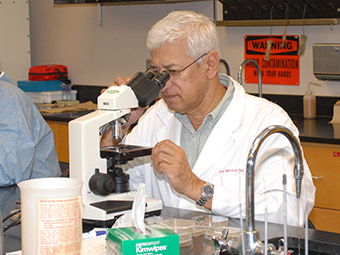Document Type
Article
Publication Date
3-1977
Abstract
Vegetation patterns were studied in relation to topography to ascertain the degree of phytosociological change and to provide an inventory of the vegetation of South Padre Island. Six major terrestrial topographic zones were recognized: (1) Foreshore, (2) Backshore, (3) Primary dunes, (4) Secondary dunes and vegetated flats, (5) Tidal flats, and (6) Washovers. The flora includes at least 204 species of angiosperms representing 47 families. Five families, Compositae (26), Cyperaceae (10), Gramineae (46), Leguminosae (24), and Scrophulariaceae (8), account for 55.9% of the species diversity. The vegetation occurs in distinct zones that correspond closely to topographic facets. Comparison of three trans-island transects showed that Schizachyrium scroparium was dominant on all three transects and the only important species which occurred on all three transects. Real estate "developments" have produced major changes and development is continuing. Thus, the natural habitat of South Padre Island may rapidly disappear.
Recommended Citation
Judd, Frank W., R. I. Lonard, and S. L. Sides. “The Vegetation of South Padre Island, Texas in Relation to Topography.” The Southwestern Naturalist 22, no. 1 (1977): 31–48. https://doi.org/10.2307/3670462
Publication Title
The Southwestern Naturalist
DOI
10.2307/3670462



Comments
The Southwestern Naturalist © 1977 Southwestern Association of Naturalists